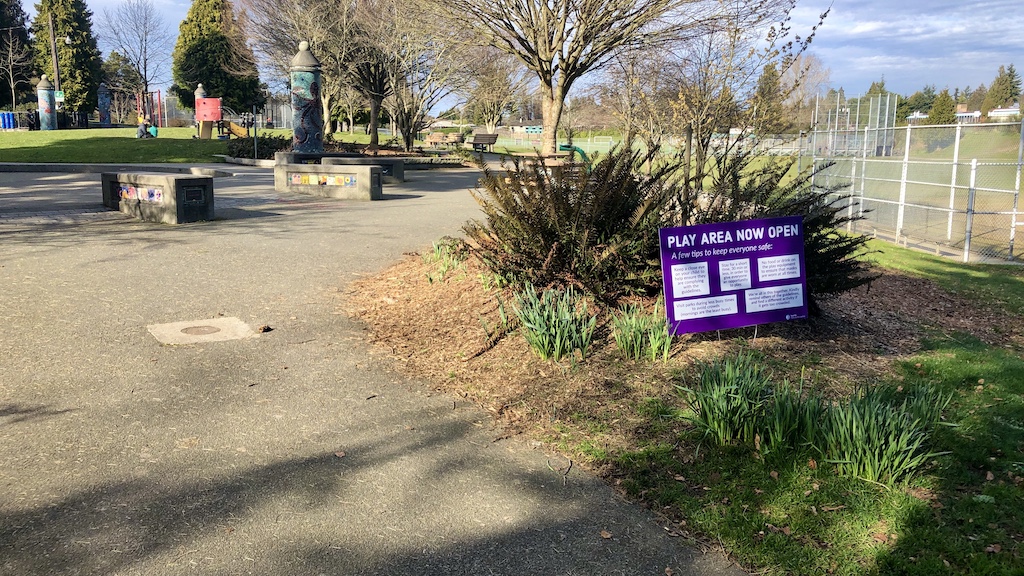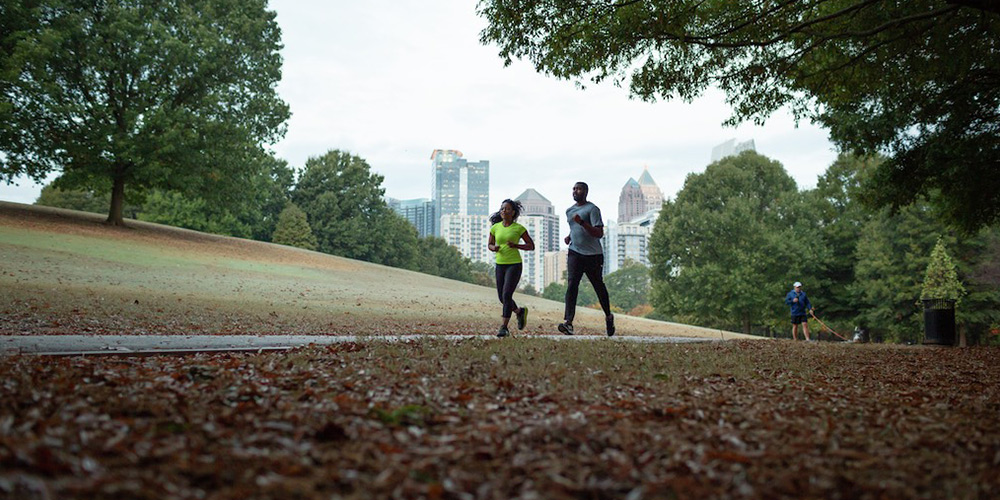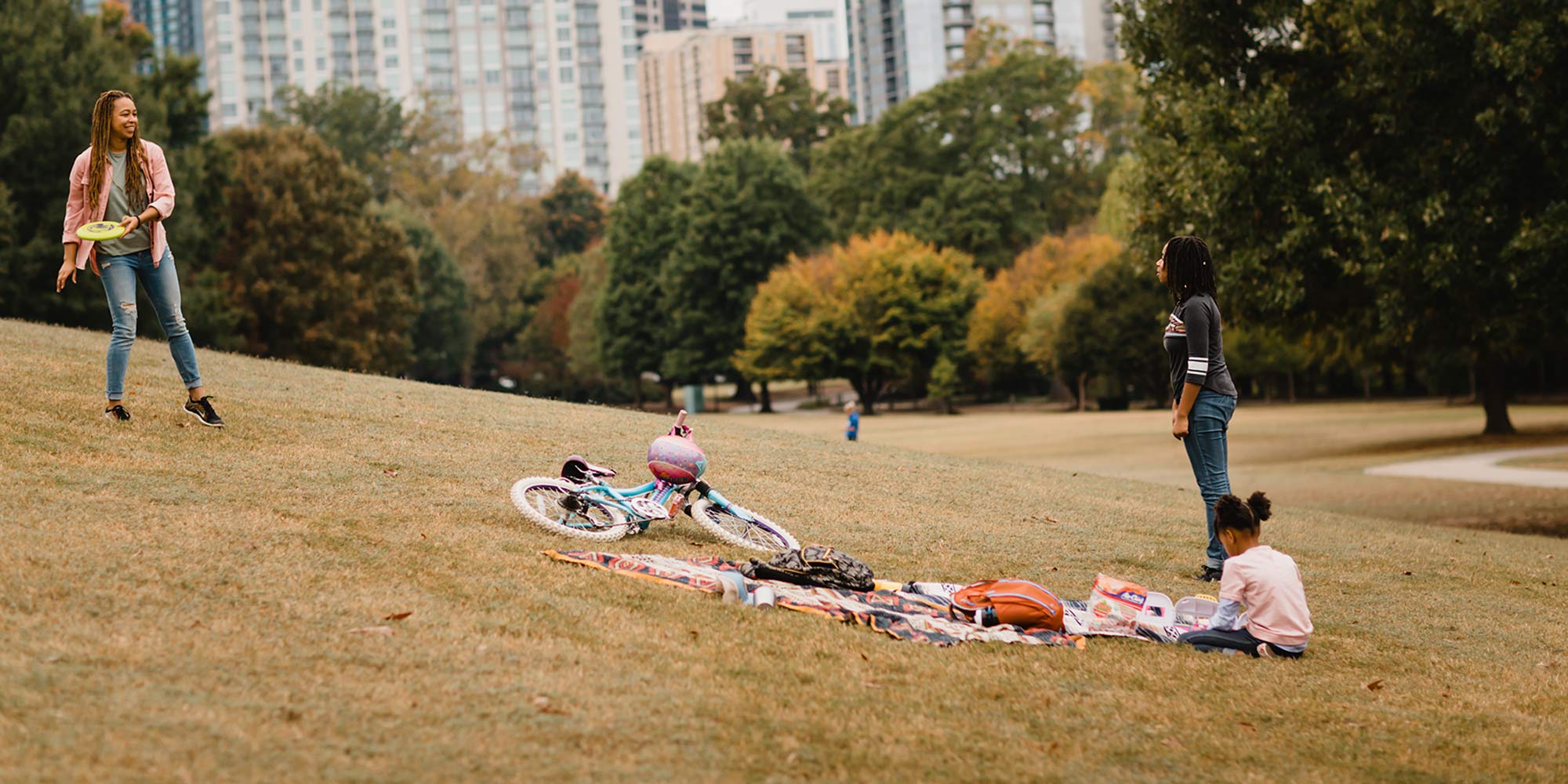In spring 2020, just as Harvard University researchers were set to launch the field portion of a national study investigating the link between time in nature and well-being, the pandemic hit. City and state officials imposed lockdowns and, in many areas, limited access to hiking trails, beaches and state parks to prevent the spread of the coronavirus. With that part of the study delayed, researcher Linda Powers Tomasso wondered about another critical question: How does being deprived of nature impact someone’s well-being?
In normal circumstances, it’d be difficult to answer. “You can’t go out there and intentionally deprive people of something that’s good for them,” Tomasso says. But the pandemic had created natural experiment conditions.
State and local governments eventually eased the lockdowns. But those shelter-in-place restrictions, while done with good intention, had a significant effect on people’s well-being, according to new research published February in the International Journal of Environmental Research and Public Health. (REI provided grant money to the Harvard T.H. Chan School of Public Health for the study).
The study, which recruited from four large metro areas and had a final sample size of 529, found that 42% of people surveyed between April 22 and mid-May spent less time outside. Among those who reported feeling nature-deprived at the height of the lockdowns, they felt a decrease in well-being that was more severe than their feelings about lost wages. That negative sentiment was only eclipsed when they lost a job entirely.
What made the most difference to survey participants, Tomasso says, was being able to put on sneakers and reach a park within a few minutes. “In policy terms, we need to look at decentralizing nature,” she says. Rather than only having one marquee park that a small percentage of the population can walk to—like Central Park in New York City—we need several smaller parks that still provide a natural escape. “How you interact with nature should not be a special activity that takes half a day to get to,” she adds.

Amid travel restrictions and closures, many turned to their neighborhood parks and local green spaces for fresh air and respite. But not everyone has access to safe, nearby green spaces to walk, run or play. “The Nature Gap,” a report published last July and led by the Hispanic Access Foundation and the Center for American Progress revealed that communities of color are three times more likely than their white counterparts to live in nature-deprived areas. Seventy percent of low-income communities are deprived of nature. The pandemic further exacerbated inequities built on a history of racism and segregation, according to the report.
“Inequity to outdoor spaces is the same as inequity in health care, employment security, air pollution [and so on]. It’s all the same struggle,” says Shanna Edberg, director of conservation programs at Hispanic Access Foundation, who co-wrote The Nature Gap. “The same communities that don’t have outdoor access are the ones disproportionately getting sick and dying from the pandemic.”
In study after study, a lack of access to green spaces overlaps with other health inequities, including coronavirus infection rates and overall mortality.
Uneven access to nature
“The pandemic raised the profile of seeing parks as part of our public health infrastructure,” says Linda Hwang, director of strategy and innovation at The Trust for Public Land (TPL), a nonprofit whose mission is to create parks and protect lands. “Parks that have deep green canopy can do a lot to offer shade and help address extreme heat days,” she says. Cities with fewer tree canopies are hotter, and low-income areas are more likely to be hotter than wealthy areas.
And while parks can’t solve all of the systemic issues they touch, improving park access in urban areas can be part of the solution, Hwang says.
If you don’t have access to nearby nature, you also don’t get the benefits that nature provides. Beyond being a good place to stretch your legs at a social distance, a growing number of studies suggest that green spaces positively impact people’s health. In one study of 20,000 people, those who spent at least two hours a week in nature experienced better physical and mental health. A U.K. study found that time in nature was linked to a greater sense of community and lower crime rates. Green spaces seem to improve cognitive development in children, while tree-lined streets were associated with fewer asthma hospitalizations.

While distant preserves of land are one way to celebrate nature, close-to-home access matters a lot as the pandemic demonstrated. Yet some 100 million Americans—that’s 1 in 3—don’t have a park within a 10-minute walk of their home, according to the TPL. And that’s before you consider whether it’s a quality park, with basketball courts or a playground or a trail.
What’s being done
Outdoor advocates say we need more and better parks where people are. That’s easier said than done. In densely populated cities, there may be little land available for new parks, says Hwang. And many cities have slashed park budgets. That’s why a coalition of more than 200 community groups, nonprofits and companies like REI is pushing Congress to help close the nature gap by investing $500 million to build or improve 1,000 local parks. Supporters say the Parks, Jobs and Equity Act would expand more opportunities for park access, particularly in underserved communities and boost local economies.
Meanwhile, a coalition of groups is pushing for the Outdoors For All Act, a bill that dedicates funding for parks in urban, underserved communities. (That bill was part of a public lands package, the Protecting America’s Wilderness and Public Lands Act, that the U.S. House passed on Feb. 26.)

To expand park access, getting creative might also help, says Catherine Nagel, executive director at City Parks Alliance. She has seen people increasingly use cemeteries, city halls and college campuses, even landscaped church grounds, as places to reflect and commune with nature. “There may be more green space than we think of, but it might not be traditional,” she says.
Still, improving access to parks for underserved communities will require more than parks. It will also require addressing the racism that has excluded people of color from public places. “The struggle against racism is also the struggle for equity in the outdoors,” Edberg says. Consider the example of Christian Cooper. On May 25, 2020, Cooper, a Black man, was birding in New York City’s Central Park when a white woman, Amy Cooper, called the police on him. He’d asked her to put her dog on a leash; she falsely reported to a 911 dispatcher that he was threatening her.
The same day in Minneapolis, police accused George Floyd, a 46-year-old Black man, of using a counterfeit $20 bill. An officer pinned Floyd to the ground with a knee on his neck, resulting in his death.
“Black people and Brown people are never going to feel comfortable if the police are able to kill with no accountability,” Edberg says.
Increasing representation in decision-making
Increasing visibility for Brown and Black people in the outdoors is important, and many organizations are working to bring more communities to hiking trails and other nature experiences. But a lot of the most impactful work happens behind the scenes, says José González, the founder of Latino Outdoors, a national community of leaders in conservation and outdoor education.
“Sometimes this policy work is not the exciting, visible work. People like to say: ‘Tell me the program, tell me the hike, I want to see the pictures that go in the brochure,’” he says. But visibly seeing people of color in the outdoors is only part of the work. “I want to be attentive that our communities don’t just become objects of programming,” he says. “How are we present through all of these other leadership steps?”
The San Diego chapter of Latino Outdoors provides one example of that beginning-to-end leadership. The group received a grant in February, which will help the chapter organize trips for Latino families to Anza Borrego Desert State Park, Silver Strand State Beach and Palomar Mountain State Park. “They designed this mountain-to-the-sea experience,” González says. “It’s being led by people that look like you, that sound like you, that applied for the funding with you in mind, rather than any other type of savior parachuting component.”
It’s also important to involve the local community so that new parks actually benefit them, Hwang and others say. Long beltway-style parks, such as New York’s Highline or Atlanta’s BeltLine (both former rail lines repurposed into parks) led to more than a 200% increase in gentrification. Parks closest to downtown were also more likely to gentrify an area.
But that doesn’t have to happen. Nagel points to the 11th Street Bridge project in Washington, D.C., where leaders paused the development to work with residents to limit displacement. That included pursuing down-payment assistance programs so more residents could buy their homes and creating land trusts in order to preserve affordable housing.
“That project is really doing a great job changing the way cities think about parks as not just an isolated intervention in a neighborhood but as part of a more comprehensive community revitalization strategy,” Nagel says.
At the Hispanic Access Foundation, Edberg says several programs are moving us toward a more equitable future. The foundation hosts a Latino Conservation Week every July, to raise awareness of events across the country that emphasize the role of Latinos in conservation.
Bringing parks to where people need them most

Cities are using data and community outreach to strategically invest money where the need is greatest. For example, the Minneapolis Park and Recreation Board looked at neighborhoods based on diversity, health indicators, youth population and median household income, among other factors. They also weighed the quality of nearby parks, including the hours the local recreation center was open and how much programming it offered.
The city used that data, paired with a Community Outreach Department that spent years connecting with communities, to distribute funds more equitably. One of the earliest projects was at Peavey Park, where the city added new basketball courts, more play areas, picnic pavilions and a multi-use athletic field. The revitalized park opened in 2019.
“It really sets cities up to be able to address multiple challenges simultaneously,” Nagel says.
Talking about structural issues and historic oppression may feel over-intellectualized and difficult to clarify for some, González says. But current inequity is built on these structures. He gives the example of redlining, a practice where the U.S. deliberately segregated people of color out of suburban homes into urban housing projects. Redlining contributed to hotter neighborhoods today with poorer areas having fewer trees, parks or green spaces, among other lasting inequities, according to a 2019 study.
“We’re living with those consequences now,” González says. You can overlay maps of historic redlining and see that people suffering from asthma match the outlines of those maps, he says. Neighborhoods in those redlined areas tend to have higher coronavirus risk factors, he notes.
Policy and structural change are crucial now, González says, so that 50 years from now, those maps are finally, deliberately, different.
Editor’s Note: REI provided $150,000 to researchers at the Harvard T.H. Chan School of Public Health to explore the link between time spent in nature and well-being. REI recently gave $15,000 to the Hispanic Access Foundation to support Latino action on public lands and $20,000 to Latino Outdoors to engage Latino communities in the outdoors. REI has also given money to City Parks Alliance and The Trust for Public Lands.


